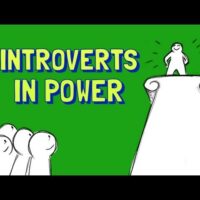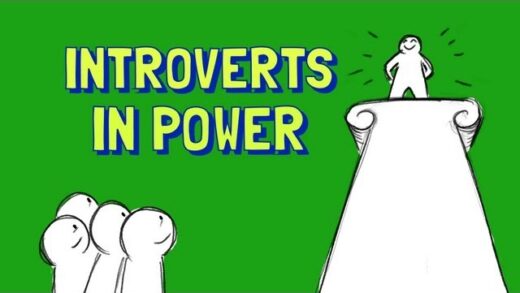Your Eyes Are Revealing Your Deepest Thoughts And You Don’t Even Know It!

Your eyes are revealing your deepest thoughts—and science now shows it’s more than just a poetic phrase. Subtle eye movements can actually reflect the type of thinking happening in your brain, from recalling images to feeling emotions. This idea forms the foundation of the Eye Accessing Cues (EAC) model, a fascinating part of Neuro-Linguistic Programming (NLP) that links eye direction with specific mental activities. Understanding this connection might just unlock a new way to interpret human thought patterns.
But what if you could actually tell what kind of thinking someone was doing just by watching their eyes? That’s exactly what a psychology student named Richard Bandler and a linguist named John Grinder, the brilliant minds behind something called Neuro-Linguistic Programming (NLP), set out to do in the late 1970s.

The “Eye Accessing Cues” (EAC) Model: Your Eyes Are the Windows to Your Mind!
Bandler and Grinder had a breakthrough idea: they realized that our sensory experiences (like what we see, hear, or feel) are super important to how we think. So, they developed a theory called “Eye Accessing Cues” (EAC), claiming that by observing someone’s eye movements, you could figure out which sensory “impressions” were active in their mind. Basically, your eyes really can be the “windows of the mind,” as the old saying goes!
Now, hold on a second. If you’ve heard about this before, you might have also heard some myths or even been told it’s “bunk.”
Let's clear the air right away because this model has often been misunderstood.
BUSTED: It’s NOT About Lying (And It’s Not a One-Size-Fits-All Rule)!
Here’s the biggest misconception: the EAC model was never meant to be a lie detector! Bandler and Grinder never claimed that looking a certain way meant someone was lying. So, you can throw that idea right out the window!
Another common misunderstanding is that the model shows exactly how everyone organizes their thoughts. But that’s not quite right either! Bandler and Grinder intended their model as an example – one that applies to a lot of people, sure, but an example nonetheless. As they put it themselves, “You will find people who are organized in odd ways. But even somebody who is organized in a totally different way will be systematic; their eye movements will be systematic for them.”
Think of it like this: if someone doesn’t follow the “common” pattern, they’ll still have their own consistent system, and you can figure it out! So, if the model doesn’t seem to fit someone, don’t force it. As the wise Erickson once said, “If… it doesn’t work,… do something else.” But for most people, most of the time, this EAC model is incredibly useful!

The Secret Decoder Ring: What Each Eye Movement Means in the Common Model
So, what does the “common model” actually say about where our eyes go when we’re thinking? It’s pretty cool once you get the hang of it:
Thinking in Pictures (Visual Thoughts):
Remembering What You Saw: When you’re trying to recall an image, like the color of your car or how your best friend looks, your eyes will typically look up and to the left.
Creating New Images in Your Mind: But if you’re imagining something you’ve never seen before—like painting your house with stripes or picturing the Mona Lisa drawn by a five-year-old—your eyes will tend to go up and to the right.
Hearing Things in Your Head (Auditory Thoughts):
Remembering Sounds or Conversations: If you’re recalling what someone said to you or trying to remember how your favorite song starts, your eyes will usually move straight to the left.
Imagining New Sounds or Conversations: When you’re dreaming up new sounds—like picturing Barack Obama talking on helium or wondering what Bruce Springsteen would sound like underwater—your eyes will go straight to the right.
Feeling It (Physical Sensations & Emotions – Kinesthetic):
When you’re thinking about how something feels (like the heat of last summer), how something smells (like an old pair of socks), or even how something tastes (like imagining eating a lemon), your eyes will typically drift down and to the right. Interestingly, for these kinds of feelings, the model doesn’t separate between remembering and constructing new sensations.
Talking to Yourself (Internal Dialogue / Internal Reasoners):
For those moments when you’re having a deep conversation with yourself, working through a problem logically, or simply asking yourself a question (like “Do I often speak to myself?”), your eyes will often look down and to the left. These folks are sometimes called “neutral or digital people.”
Imagine this: You ask a friend about her amazing holiday. She first glances up and to the left (recalling those beautiful visual memories), then quickly looks down and to the right (connecting it to how great it felt). If she follows the common model, you’ve just seen her thought process in action!
Is It Really True? Addressing the Doubts and the Proof!
Okay, so we’ve debunked the lying myth.
VibeMotive
But what about other criticisms?
Some argue the model doesn’t apply to everyone. And guess what? The creators, Bandler and Grinder, would agree with that! Their whole point was that everyone is systematic in their eye movements, even if they don’t follow the “common” pattern.
There was even a study by body-language expert Kevin Hogan that suggested people might not be all that organized in their eye movements to begin with. However, Hogan himself admitted he had concerns about his own study’s methods and said it needs to be repeated before anyone can draw final conclusions.

But here’s the clincher: formal neurological research has confirmed a link between our mental states and how our eyes move! This scientific backing really supports the core idea behind the EAC model. And personally, the author of the book states their own practical experience using the model has been “more than satisfactory.” If it works for you, use it!
Ready to Try It Yourself? The “Da Vinci Test” Awaits!
Want to put the EAC model to the test right now and see if it works for you?
Here’s a super cool exercise called “The Da Vinci Test”:
1. Look Up & Left: Pick a spot up and to the left of you. Stare at it.
2. Visualize the Mona Lisa: Now, try to vividly imagine the famous Mona Lisa painting. You’ve definitely seen it before! Think about every detail: her face, her clothes, the colors, the background. Really get it clear in your mind. Take about 20 to 30 seconds.
3. Erase and Reset: Done? Good. Now, completely clear that image from your mind.
4. Look Down & Right: Next, fix your eyes on a point down and to the right of you. Stare at that spot.
5. Visualize Again: Now, try to imagine the Mona Lisa again, just like you did before.
What happened? Even though you literally just visualized it, it’s probably a lot harder this time, right? That’s because, simply put, “we don’t keep images down and to the right. We keep images up and to the left.” Your brain’s visual processing center just isn’t as active or accessible when your eyes are in that down-and-right position for recalling images. Pretty neat, huh?
Become a Mind Reader (Sort Of!): How to Use “Control Questions“
If you want to know if someone you’re talking to follows the common EAC model (or if they have their own systematic pattern), you can use “control questions.” These are specific questions designed to make someone access a particular type of sensory memory or thought. Then, you simply watch their eyes as they answer!

Here are some examples of questions you can ask:
To Check for Visual Memory (Eyes Up & Left):
“How does the carpet in your living room look?”
“What color is your car?”
“Describe how your best friend looks.”
To Check for Visual Construction (Eyes Up & Right):
“How would you look with long/short hair?”
“Imagine painting your house with stripes.”
“How would you write your name upside down?”
To Check for Auditory Memory (Eyes Straight Left):
“How does your favorite song begin?”
“Imagine the sound of your alarm clock going off.”
“Do you remember exactly what she said before she left?”
To Check for Auditory Construction (Eyes Straight Right):
“Can you imagine Barack Obama on helium?”
“What kinds of voices do you think Laurel and Hardy had?”
“How would Bruce Springsteen sound under water?”
To Check for Kinesthetic Memory/Sensations (Eyes Down & Right):
“Do you remember how hot it was last summer?”
“How does a pair of ripe old socks smell?”
“Imagine eating a lemon.”
To Check for Internal Dialogue (Eyes Down & Left):
“Can you ask yourself if you often speak to yourself?”
“What do you say when you’re completely alone and something goes wrong?”
By carefully observing their eye movements as they answer these types of questions, you can confirm whether their pattern matches the common EAC model or discover their unique, systematic way of accessing their thoughts! It’s a fascinating way to get a glimpse into how someone’s mind truly works!
Book Source:
The Art of Reading Minds: How to Understand and Influence Others Without Them Noticing Book by Henrik Fexeus


















Impressive ❤️❤️❤️